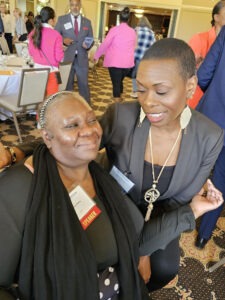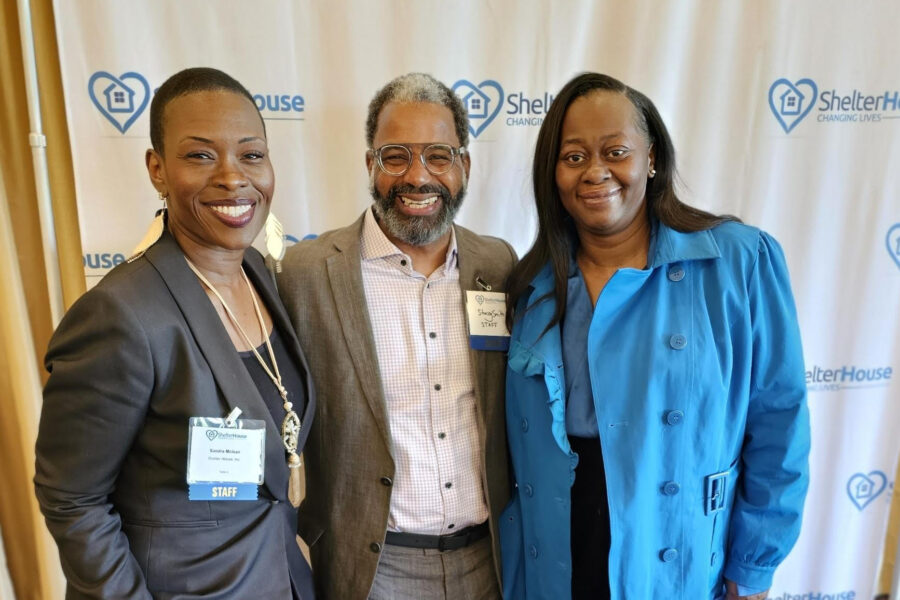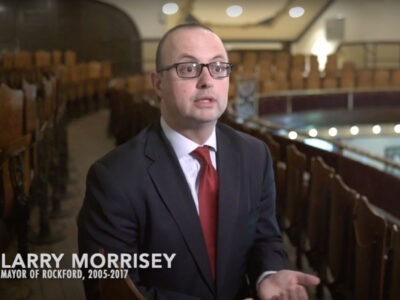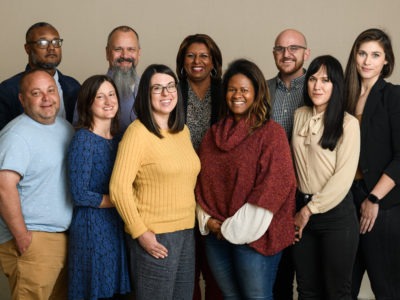In Fairfax, Virginia, anyone who called a shelter or became unhoused within the past 30 days was contacted by a team with one clear goal: divert them from having to face literal homelessness. In the first quarter of 2023, 74% of people had been able to avoid experiencing literal homelessness.
“A lot of clients were served without ever having to spend a dime,” said Sandra McLean, Diversion Program Manager at Shelter House.
A lot of clients were served without ever having to spend a dime.
Sandra Mclean
Supported by an investment by Kaiser Permanente, the Built for Zero community in Fairfax, Virginia, implemented the Diversion Pilot Program after looking at their inflow, which refers to the number of people entering homelessness at a given time.
They specifically looked at people entering into shelters and found that many of those entering shelters were not already unhoused– many had never even spent a night in a shelter before.
“That’s tough on individuals when they’ve never experienced this before, and it’s scary,” McLean added.
This pattern revealed an opportunity to divert individuals from having to face literal homelessness by identifying and working to overcome their unique barriers to remaining housed. While a prevention program focuses on those in danger of becoming homeless, diversion assists people who are trying to enter shelters by working with them to leverage their support system. The ultimate goal of diversion is to work with people to avoid entering shelters or to return immediately to housing.
Diversion programs are more common now, but in 2021, they were relatively rare, McLean said. “We knew what we wanted to do, but there wasn’t a lot of studies on shelter diversion. Fairfax’s program was essentially like ‘building the plane while it’s flying.'”
Practicing diversion in the last mile
The Diversion Program is specifically designed for single adults, including veterans, which is the current focus population for the community’s Built for Zero efforts.
When it comes to the veteran population, Fairfax is in what is known as the last mile of a standard for solving homelessness, known as functional zero. This means that Fairfax is exceptionally close to rendering veteran homelessness rare and brief when it occurs. During hypothermia months, the community saw a rapid increase in inflow for veterans and the community at large, which is the last thing you want to see when closing in on that last-mile goal.

To maintain their progress, the team at Shelter House offered services to all veterans they connected with, regardless of if they fit the criteria of newly becoming homeless. Today, they are within 30 people of reaching their functional zero threshold of three veterans experiencing homelessness at any given time.
Diversion plays a critical role in the community’s personalized, flexible approach to helping individuals overcome barriers to housing. McLean’s team, which included Dennis Cartagena, Stacey Smith, and Monique Sanders, filtered referrals and reached out to eligible individuals.
The program’s growth was because of “their hard work and their willingness… to reach as many clients as possible. It was this team that contacted each veteran that was referred to us, and trust me, there were many,” McLean said, who trained the team on the art of ‘having tough conversations’ with clients.
After connecting with clients, diversion specialists would then have the tough conversations and see what barriers are preventing clients from remaining housed. Specialists offer them mediation, reunification, and financial support. They also see if clients can be directed to other services.
The program removes barriers for clients that other services may put in place. For example, many other services require valid IDs. For people who don’t already have access to their birth certificate, social security card, or ID, they most likely won’t know where to get one.
“Or if we’re dealing with an individual that was experiencing domestic violence,” McLean said, “someone could be holding their documentation.” By cutting down on paperwork and red tape, the program is able to spend more time providing services to people who need them.
Flexible spending was also an important feature of the program. The program was able to use its funds to help people access car repairs, credit repair services, and pay off evictions.
“Some people just wanted to finish that certification so that they could get back to driving trucks,” McLean said.
They will also cover travel expenses so participants can stay with families in other states.
“I never heard of an organization that will pay for your plane ticket,” said Theresa, a former participant in the program. Even once you enter another state, “they will still support you until you’re able to get up on your feet.”
“I’ve seen a lot of abuse-type situations where people are in immediate crisis,” she said. “There’s a sense of urgency that needs to take place.” For those who must urgently leave their situations, access to flexible funding can help bring people to safety.
From participant to advocate
Theresa came to Virginia after fleeing from a domestic violence situation in another state. She was making phone calls to shelters, but many were filled because hypothermia season was approaching. One day, McLean connected with Theresa and became her case worker.

“To this day, I don’t know who gave Sandra my number, but she called me,” she said. “Once she heard my story that’s what set the course for our relationship.”
Theresa is in a wheelchair and faced the added barrier of needing an accessible shelter to sleep in. During this time, “I was talking to Sandra, if not, every day, every other day, trying to make sure that I had a stable place to stay and not have to sleep in my car,” said Theresa. Eventually, they found a shelter that was able to buy a bed specifically for Theresa.
For the next six months, Theresa worked with McLean to come up with a permanent housing solution. McLean’s support and care made a difference for Theresa. “She made sure I understood what she was able to do for me,” said Theresa. “It’s bittersweet. How me and Sandra met wasn’t under good circumstances, but something good came out of it. She has really been so patient, kind, and encouraging throughout this whole situation.”
Once she found stable housing, Theresa began speaking out about her experience in the program. She’s spoken at events and will even be featured in an upcoming episode of The Way Home, a short-form docuseries focusing on the homelessness crisis in America.
Results inspire other programs
We were able to stop so many from ever having to stay one night in their car.
Sandra McLean
As of March 2023, the Diversion Program Pilot has successfully diverted 74% of those entering the program, a far stretch above the goal of 30%. The average time for someone to be successfully diverted was 23 days. In times when money was spent, the amount was far less than what it would cost to participate in a rapid rehousing program.
Among people who would be eligible for the Diversion Program, the number of people entering emergency shelters decreased by 47% from the year prior.
The program served six veterans during its run, with four of the participants successfully exiting homelessness during that time. They also saw a 3% reduction in veteran inflow compared to the year prior.
While the program has sunsetted, it shows the impact diversion can have on people. Its impact can still inspire future programming in Fairfax and other states.
“We were able to stop so many from ever having to stay one night in their car,” McLean said. “We had a lot of individuals that never had the chance to even see the inside of a shelter, even though they thought that was the only place that they could go.”




